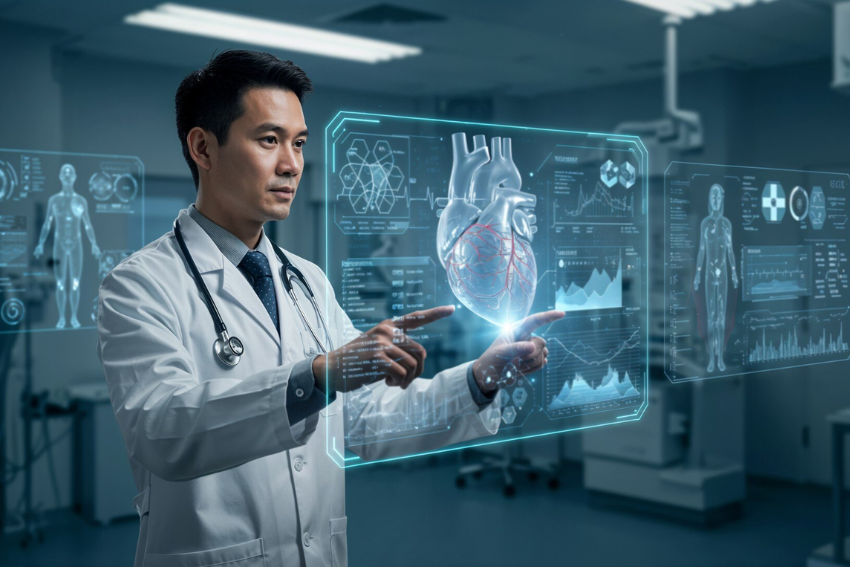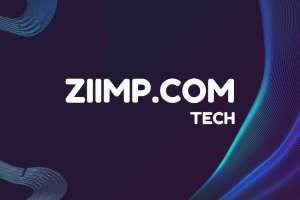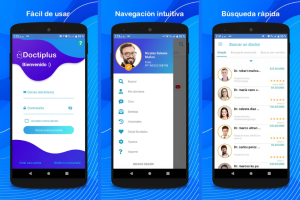AI in remote patient monitoring is transforming healthcare by enabling providers to track patients’ health metrics in real-time, outside traditional clinical settings. This new technology uses artificial intelligence to process the data given by wearable device, mobile apps, and sensors, and it has a proactive continuous approach to help manage chronic diseases, post-hospital management, and wellness.

In this article, we’ll dive into the use cases, benefits, challenges, and future potential of AI in remote patient monitoring, shedding light on why it’s becoming a cornerstone of modern healthcare.
What is AI in Remote Patient Monitoring?
Remote patient monitoring (RPM) incorporates the utilization of digital assets to gather health information about the patient in real-time, ordinarily in their home. With AI, they are even more intelligent and can draw conclusions based on huge numbers of data to reveal patterns, foresee health hazards, and give practical information. AI in remote patient monitoring integrates machine learning, natural language processing, and predictive analytics to enhance decision-making for healthcare providers and improve patient outcomes.
Whether it be wearable gadgets measuring heart rate or smart scales showing weight changes, AI analyzes it to provide users with personal solutions, raise red flags, or even inform healthcare providers about the possible situation that needs assistance. The result? An improved, more efficient, patient-focused healthcare model.
Key Use Cases of AI in Remote Patient Monitoring
AI in remote patient monitoring is versatile, with applications across various medical fields. These are some of the most influential use cases:
Chronic Disease Management
AI-based RPM is useful to patients with conditions such as diabetes, hypertension, or heart disease that are chronic. For example:
- Monitoring Diabetes: AI studies continuous glucose monitoring (CGM) data to foresee spikes or crashes in sugar levels; it provides real-time dietary recommendations as well as insulin dosages.
- Hypertension: Smart devices measure blood pressure and AI determines trends that can reveal a potential risk of a stroke and take actions accordingly.
- Heart Failure: AI finds abnormal heart rate or retention of fluid by using the data collected on smart watches or the implanting gadgets, avoids readmission to hospitals.
Post-Surgical Recovery
Post-operatively, patients should be monitored carefully to avoid complications. AI in remote patient monitoring:
- Monitors pulse, blood oxygen saturation and temperature.
- Identifies early symptoms of infection or complications e.g. abnormal healing pattern of a wound.
- Offers recovery indicators and reminds doctors should a recovery not follow the anticipated directions.
Mental Health Support
AI-based RPM is potentially becoming popular in mental health monitoring. Wearable devices and apps are able to:
- Compare the pattern of the sleep, variations in the heart rate, activity to indicate stress or anxiety.
- Apply natural language processing to evaluate patient responses of mental health apps and identify evidence of depression or suicidal thoughts.
- Provide tailored mindfulness practice or refer patients to the therapists in case of emergency.
Older People Care
RPM that uses AI is revolutionizing aging populations. It enables:
- Sensing falls via wearable sensors, and AI can detect regular body movements, as well as emergency-related ones.
- Monitoring of medication adherence, including AI prompting patients to take pills, warning caregivers in case care is missed.
- Mental fitness tracking, the process of identifying the onset of dementia by questioning a user or tracking behavioral patterns with an AI.
Preventive Healthcare
AI in remote patient monitoring isn’t just for sick patients—it’s also about prevention. AI can:
- Forecast the chances of obesity or cardiovascular disease.
- Offer personalized wellness solutions, like physical activity regimens or nutrition guidelines.
- Promote active health management and discourage the incidence of serious problems.
Benefits of AI in Remote Patient Monitoring
The application of AI to remote patient monitoring brings with it a raft of patient, provider and healthcare systems benefits.
Real-Time Insights and Early Intervention
The AI computes the data in a short time and detects abnormalities quicker than a human analysis. As an example, when the heart rate of a patient increases in a way that does not match the existing parameters, AI may send a warning to a doctor before a patient reaches the dangerous stages of heart attack.
Personalized Care
AI is individual patient-focused depending on their health data. The effect of this personalization is an increase in treatment adherence and outcomes because patients are steered under the aspect of their needs.
Reduced Healthcare Costs
By catching issues early and reducing hospital readmissions, AI in remote patient monitoring lowers healthcare costs. It also reduces the requirement of personal visits thereby saving the time and resources of both the patients and the providers.
Improved Access to Care
AI powered RPM eliminates geographical barriers to healthcare thus making access to healthcare a reality to rural or underserved communities. Monitoring with high-quality and without frequent trips.
Enhanced Patient Engagement
Apps and devices that are AI-driven enable patients to control their health. Engaging patients is maintained because of interactive interventions, e.g. reminders or gamification of health objectives.
Scalability for Healthcare Systems
With AI, large data crunching capabilities will enable a provider to follow up on thousands of patients at a time without losing touch with the quality. Such scalability is important in terms of coping with an increasing number of patients.
Challenges of AI in Remote Patient Monitoring
While the benefits are significant, AI in remote patient monitoring faces some hurdles:
- Data Privacy and Security: Health records are confidential, and the AI systems have to fulfill regulations as HIPAA to secure information about the patients.
- Integration with Existing Systems: Bringing AI to existing healthcare systems may be a complex process, and it can be expensive.
- Patient Adoption: Not all patients will use RPM devices effectively or be willing to trust AI-guided AIs, especially old age patients.
- Accuracy and Bias: AI algorithms need to be trained with a variety of data that prevents bias and might result in incorrect diagnosis or unfair treatment.
- Compliance with Regulations: AI technologies have to conform to high regulatory requirements, a factor which may delay its adoption.
The Future of AI in Remote Patient Monitoring
The future of AI in remote patient monitoring is bright, with advancements on the horizon:
- Improved AI Algorithms: It will better use even more mature models and will provide more accurate predictiveness, identifying minor changes in the health earlier.
- Telehealth Integration: Artificial-intelligence (AI) based RPM will integrate with telehealth systems capturing a full picture of the virtual care environment.
- Wearable Innovation: Future wearables will track more data, including blood biomarkers, and AI will use increased insight to analyze them.
- Patient Empowerment: AI will also cause a further shift in healthcare to the preventative side and patients being much more active participants in their wellness.
Conclusion
AI in remote patient monitoring is reshaping healthcare by making it more proactive, personalized, and accessible. Being able to deal with long-term illnesses to giving patients real-time care, this technology can bring incredible opportunities of enhancing life and decreasing the burden to the healthcare system. Though issues such as data privacy and adoption are still present, the current development is leading to a future where AI-based RPM will become a routine care option. As this field evolves, it’s clear that AI in remote patient monitoring is not just a trend—it’s a revolution in how we approach health and wellness.
FAQs About AI in Remote Patient Monitoring
What is AI in remote patient monitoring?
AI in remote patient monitoring uses artificial intelligence to analyze health data from devices like wearables or sensors, enabling real-time tracking and personalized care outside clinical settings.
How does AI improve remote patient monitoring?
AI can accelerate RPM because it supplies real-time data, identifies health risks, individualizes treatment plans and allows prevention strategy before things get out of hand hence improvement of the outcomes and reduction of costs.
Is AI in remote patient monitoring secure?
Trustworthy AI-based RPM solutions are legally held to regulations such as HIPAA to govern patient information, yet security relies on a high degree of encryption and privacy laws.
Can AI in remote patient monitoring replace doctors?
No, AI will assist doctors in giving data-driven insights and alerts. It makes decision-making more effective, but cannot substitute human wisdom and understanding.
Who benefits most from AI in remote patient monitoring?
Patients with chronic conditions, post-surgical patients, the older people, and those in remote areas benefit greatly, as do healthcare providers seeking efficient, scalable solutions.


